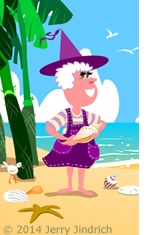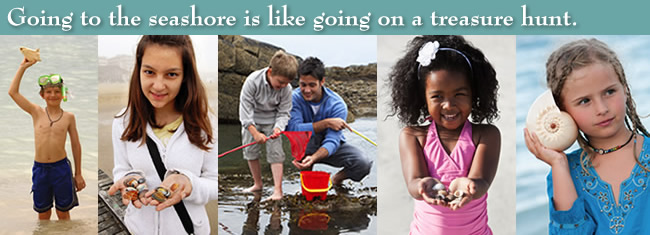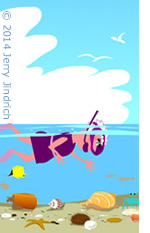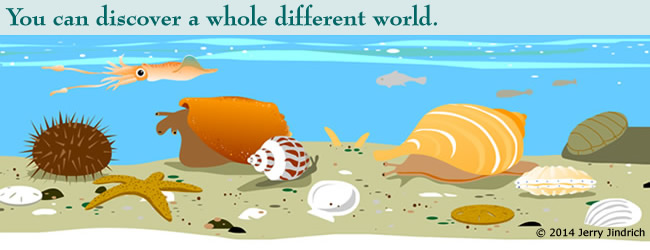
|



|
 Gastropods have one shell. Usually, that shell grows in a spiral. The shell may look like a cap, a human ear, a toy top, a pear, a corkscrew, a spindle, a club, a barrel, an egg, or an irregular shape. Some eat bits of plant matter. Some eat other animals. View a page full of mollusk shells and links to information about each.
Gastropods have one shell. Usually, that shell grows in a spiral. The shell may look like a cap, a human ear, a toy top, a pear, a corkscrew, a spindle, a club, a barrel, an egg, or an irregular shape. Some eat bits of plant matter. Some eat other animals. View a page full of mollusk shells and links to information about each.
|

|
 Bivalves have a shell in two parts that can open and close. They may be shaped like a discus, a fan, a triangle, a boat, a paddle, a heart, or have an irregular shape. They are also called filter feeders because they catch and eat tiny bits of food in the water. Clams and oysters are filter feeders. Some, like this scallop, may have lots of tiny eyes and sensory tentacles.
Bivalves have a shell in two parts that can open and close. They may be shaped like a discus, a fan, a triangle, a boat, a paddle, a heart, or have an irregular shape. They are also called filter feeders because they catch and eat tiny bits of food in the water. Clams and oysters are filter feeders. Some, like this scallop, may have lots of tiny eyes and sensory tentacles.
|

|
 Scaphopods or tusk shells are small and look something like the tusk of an elephant or a walrus. They live in the sand or mud out from the shore. You are not likely to see them or find their shells on the beach.
Scaphopods or tusk shells are small and look something like the tusk of an elephant or a walrus. They live in the sand or mud out from the shore. You are not likely to see them or find their shells on the beach.
|

|
 Chitons are unusual because their shell is made in connected parts that allow it to roll up into a ball for protection. It can also curve its body to hold onto rounded surfaces.
Chitons are unusual because their shell is made in connected parts that allow it to roll up into a ball for protection. It can also curve its body to hold onto rounded surfaces.
|

|
 Cephalopods don't look like other mollusks. This group includes the nautilus, which does have an external shell, and the cuttlefish, squid, and octopus, which do not. These mollusks eat other creatures. Instead of a single "foot", these creatures have long arms or tentacles.
Cephalopods don't look like other mollusks. This group includes the nautilus, which does have an external shell, and the cuttlefish, squid, and octopus, which do not. These mollusks eat other creatures. Instead of a single "foot", these creatures have long arms or tentacles.
|
|










